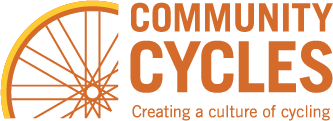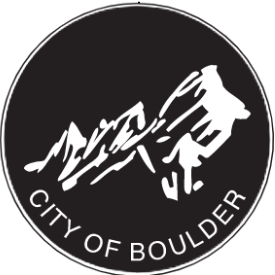Dear Members of Council:
Congratulations to newly elected Council members, and welcome back to returning members! Community Cycles, Boulder’s non-profit bicycle co-op and transportation advocacy organization, looks forward to working with each of you.
This is an exciting time for transportation in the city of Boulder and while we face many challenges, we are also excited and thankful that Council and staff are ready to thoughtfully address these challenges with pragmatism, innovation, and energy.
Community Cycles strongly supports TAB’s recommendation to use the 2022 Council retreat to focus on transportation strategies that will reduce vehicle miles traveled (VMT) in our community, and in the process achieve several key city goals including progress on the climate crisis.
There are many ways to reduce single-occupancy vehicle (SOV) use and encourage walking, biking, micro-mobility, and transit use. In particular, we highlight two areas that could quickly contribute to these VMT reductions: protected bike lanes and eliminating parking minimums..
-
Protected Bike Lanes (aka vertical separation projects)
Protected bike lanes (PBLs) provide low-stress options that are key to making biking and micro-mobility attractive to the large segment of the population concerned about cycling safety. As outlined in the TMP, “the Low Stress Network is a network of low-stress facilities to help people of all ages and abilities walk and bike safely and comfortably throughout the community.” While Boulder has an extensive network of greenways and multi-use paths, cyclists must face narrow, unprotected bike lanes adjacent to busy roads to reach destinations such as schools, jobs and shopping. Protected bike lanes, intersections, and other infrastructure make the interactions between cyclists and drivers more predictable, safe, and comfortable for all road users. This sense of safety leads to more people biking, which leads to more driver attention and further increases safety (the well-proven “safety in numbers” paradigm). Other cities, big and small, including Denver, Ft. Collins, Salt Lake City, Berkeley, New York City, and San Francisco are quickly adding protected bike lanes and intersections. Frankly, Boulder is rapidly falling behind other communities in providing safe cycling infrastructure.
We recommend that Boulder commit to adding a certain number of protected bike lanes–perhaps 20 miles–within the next two years. Plentiful peer-reviewed transportation research shows that multi-use paths such as the wide sidewalks found along 28th St. near the 29th St. commercial area are not as safe as separate, bike-specific protected lanes.
We propose two specific cases of protected bike lanes that could be implemented quickly and cost-effectively. The City has very recently installed cast-in-place concrete barriers on Folsom between Pine and Valmont that could serve as a model for these improvements. Now that we have the equipment and experience, we believe that no time-consuming, and costly, corridor planning process is warranted; the extensive TMP process has provided the public input already needed.
Case 1: North Broadway – Norwood to Violet
North Broadway is becoming North Boulder’s main street, with protected cycling infrastructure going in now north of Violet and the construction of the Armory housing complex nearing completion. Yet south of Violet there is no protected cycling infrastructure (other than a wide sidewalk on one side of the street) that connects the Wonderland and Norwood neighborhoods to the many amenities in North Boulder. Where there is plentiful space on N. Broadway between Quince and Violet there should be low-cost but effective protected infrastructure.
Case 2: 30th Street – Pearl to Iris
The northern section of 30th sees much less traffic than the southern portion. Removal of a travel lane in each direction, with a center turning lane (similar to the protected portion of Folsom St.) allows for the placement of a protected bike lane. In fact, eliminating lanes has been (unintentionally) tested due to the construction in the Boulder Junction area, which has led to extended lane closures. This section of 30th serves low income housing with a substantial number of immigrant families. Because protected bike lanes are in development between Arapahoe and Baseline, adding protection of the north portion of 30th would contribute to a continuously protected bike route running north-south on 30th, safely connecting housing to jobs, shopping, schools, and parks.
Envision the future of Downtown Boulder
Beyond these two “low-hanging fruit” cases, Community Cycles would love to see the top-ranked vertical separation project per the Low Stress Network addressed: the stressful one-way “downtown loop”. The pandemic produced a dramatic change to West Pearl, removing parking and installing pedestrian and dining space that has been welcomed by businesses and the public. Such a change – removing parking! – would have been extremely controversial just two years ago, yet this bold transition is now highly valued and likely will be made permanent. Similarly, we encourage you to imagine a new vision for downtown, one in which space for automobiles on Walnut, Spruce, and 11th and 15th streets (the downtown loop) is converted to space for people. Remove some parking on these streets, relying instead on underutilized garages, and use the space for protected bike lanes, street dining, and more pedestrian space. Consider redesigning these streets to be two-way. Studies show increased business with protected infrastructure and when streets are 2 way vs. 1 way. Or thinking really big, eliminate through traffic from these streets and use them only for local access to parking garages, alleys, and handicap parking access, and for transit. People are attracted to Boulder’s downtown not because they want an easy place to park, but because they want a cool and unique experience. West Pearl shows us how revitalizing creating more people space can be!
-
Parking Regulations
Parking minimum requirements are a way of encouraging SOV travel, by demanding that businesses and residences provide parking whether or not they think it is necessary. We are generally opposed to any parking minimums and think we should instead let the developers determine the amount of parking that will serve their particular use, rather than having the government dictate that using generic formulas derived from studies in suburban strip mall environments. We strongly encourage expedited evolution of the Access Management and Parking Strategy (AMPS), with a firmly stated direction to reduce parking minimum requirements for large new developments, and completely eliminate them for detached dwelling units, ADUs, and other incremental projects.
If AMPS is to entail a prolonged, detailed zone-by-zone analysis of parking requirements, we request that Council enact, in the short term, an across-the-board reduction by perhaps 25%, along with modest yearly reductions (perhaps 2% per year). This would be consistent with the minimum parking reductions generally given for new development, would set the expectation that requirements will be lower in the future, and make future changes under the auspices of AMPS easier to enact.
We will be reaching out to each of you in the coming month to further discuss these items affecting VMT.
Thanks for your service!
Community Cycles Advocacy Committee

